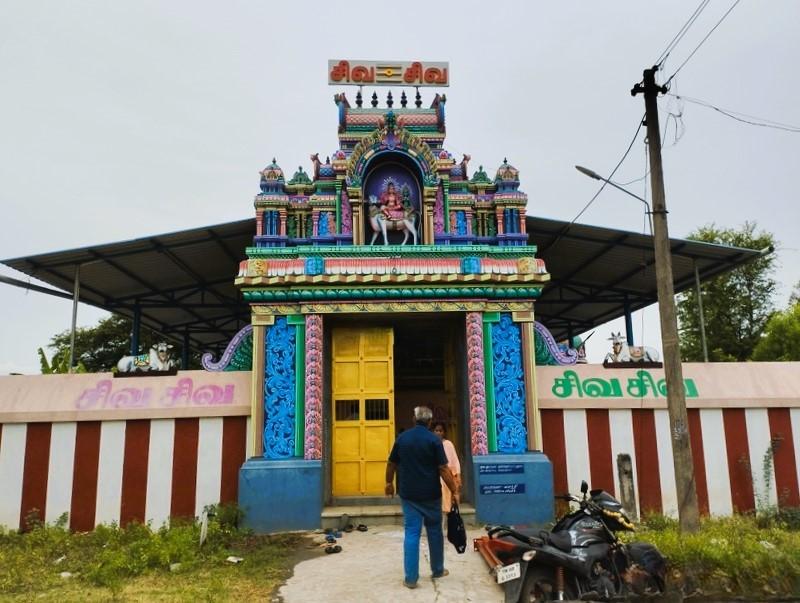Arjuna sought the Pasupatha missile to aid him in the Kurukshetra war. Lord Krishna advised him that, despite receiving many weapons from his father Indra, only Lord Shiva could bestow the Pasupatha missile. Arjuna came to this sacred place and performed penance to invoke Lord Shiva. Duryodhana, seeking to disrupt Arjuna's penance, sent the demon Mookasura to thwart and kill him.
To protect Arjuna, Lord Shiva appeared as a hunter accompanied by Mother Parvati and four dogs representing the Vedas. Lord Shiva shot an arrow at Mookasura’s pig while Arjuna simultaneously struck it with his arrow. This led to a dispute over whose arrow hit the pig first, escalating into a confrontation. In the ensuing fight, Lord Shiva broke Arjuna’s arrow. Angered, Arjuna struck the Lord with the broken arrow, causing a disturbance felt across the three worlds. At this point, Lord Shiva revealed His true form with Mother Parvati and granted Arjuna the Pasupata weapon.
The scar from this encounter is still visible on the Shiva Linga, a testament to the divine event. The place came to be known as Tiru Vijaya Mangai, reflecting Arjuna's victory. The Shiva Linga in the temple is a Swayambhu Murti (self-manifested) with the scar from Arjuna’s arrow still apparent.
Sthala Puranam :
The puranam of this temple is linked to the Kiratarjuneeyam episode in the Mahabharata. During the Pandavas' 13-year exile, Arjuna journeyed to Punnagavanam to worship Lord Shiva. While in penance, he shot an arrow at a wild boar, only to discover a hunter claiming the boar as his kill. A confrontation ensued between Arjuna and the hunter, who ultimately revealed himself as Shiva in disguise. Pleased with Arjuna’s valour, Shiva granted him the Pashupatastra.
However, Parvati doubted Arjuna’s worthiness until Shiva demonstrated Arjuna's merit using the matsa-rekha (fish mark) on his palm. Consequently, Arjuna received the Pashupatastra. This temple claims to be one of the locations where this divine episode occurred. Arjuna, also known as Vijaya, worshipped Shiva here, leading to the deity being named Vijayanatheswarar, the Lord of Vijaya.
Another interpretation suggests that Shiva’s name Vijayanatheswarar reflects the pleasure he derived from Arjuna’s archery prowess, evolving from Vijaya Anandeswarar to Vijaya Natheswarar over time. The Shiva Linga in the temple bears scars from the divine combat between Shiva and Arjuna.
There is some confusion about whether this temple or the nearby Govandaputhur is the true Tiruvijayamangai. The correct location is Vijayamangai, while the village is named Govandaputhur.
According to the sthala puranam, this temple is a prarthana sthalam (prayer site) for success in various endeavours, including education, business, and work. Shiva is also worshipped here for general life improvement.
When Appar visited this temple, the Kollidam river was swollen, so he sang his hymns from the riverbanks. Vinayaka and Murugan turned south to listen to him, and they are depicted facing south in the temple. Arunagirinathar also praised Murugan in his Thiruppugazh hymns at this temple.
Built during the medieval Chola period, the temple features typical Chola architecture but has unique aspects. The vimanam (tower) above the sanctum sanctorum is taller than the front gopuram, which has only one tier. The koshtam (niche) houses only Dakshinamurti, suggesting it could be a later addition. This indicates that the original temple structure dates back to the early Chola period, with subsequent modifications by Chola kings such as Uttama Chola, Raja Raja Chola I, Rajendra Chola I, Kulothunga Chola I, and Kulothunga Chola III.
